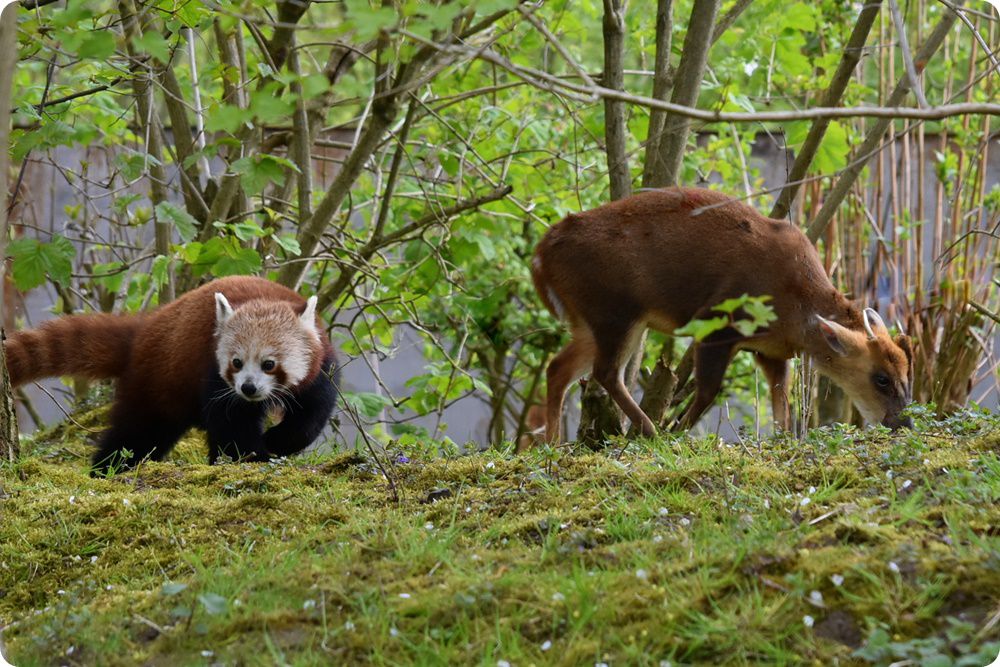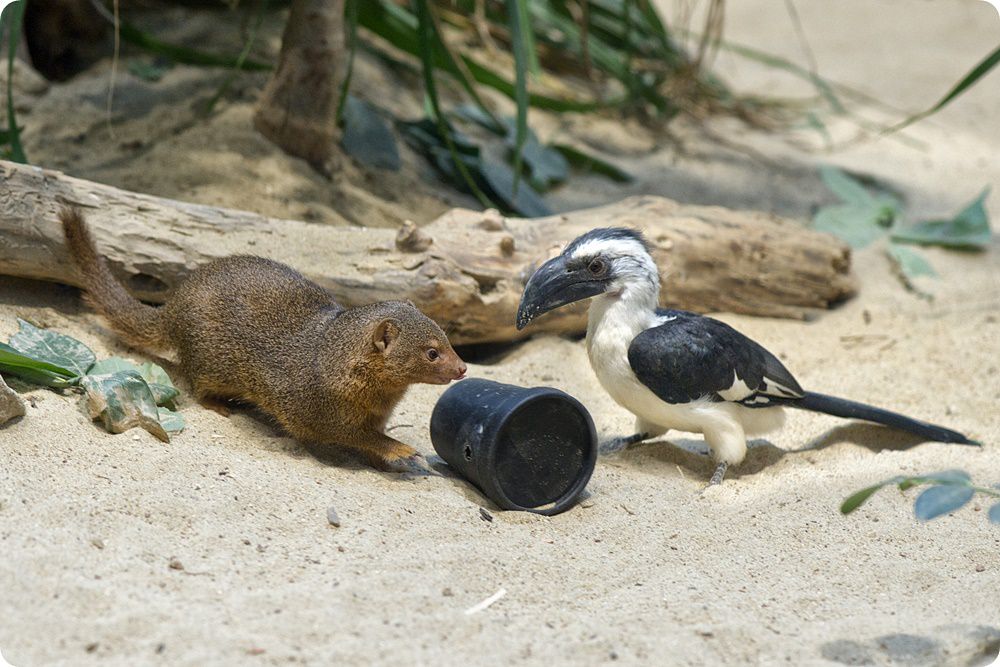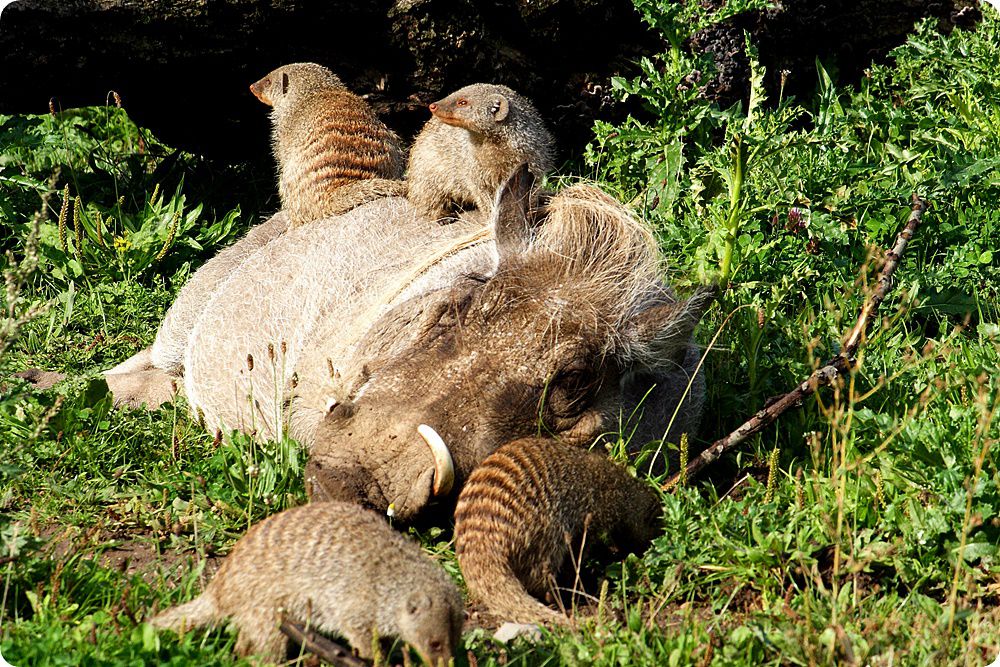Európa állatkertjei
ZOOlogical Gardens of EuROPE
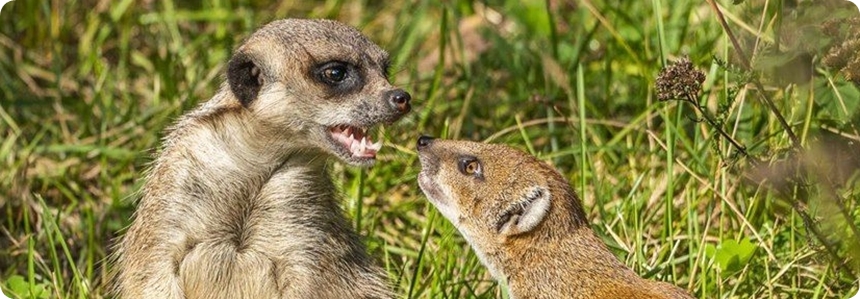
Mixed-species exhibits with Carnivores (Carnivora) – Summary
Written by KRISZTIÁN SVÁBIK
Team Leader, Toni’s Zoo, Rothenburg, Lucerne, Switzerland
Uploaded: 15th December 2021
Introduction
In the July 2021 issue of the Connect Magazine, the monthly journal of the Association of Zoos & Aquariums (AZA), I published a short summary of my series of articles titled as 'Mixed-species Exhibits with Carnivores'; below a slightly expanded version of it is available.
Mixed-species exhibits with different mammals in the last few decades became a major trend. In former times principally ungulates were associated, but nowadays more and more other taxa, e.g. different carnivores have been socialized with each other or other taxa. On the basis of this husbandry technique, I decided to run a research project and write a series of articles about mixed-species exhibits with the order Carnivora. The main aim of this research is to summarize data and experiences about this relatively new style exhibitry with the hope that these manuals will be useful supplements for the husbandry guidelines for different species.
Material & Methods
The beginning of the whole project took place in 2012 and afterwards has been continued in 2018-2019. The first part of the data collection was an extended investigation in the specialized literature, while the second and more important part was the contact with zoological institutions to invite them to participate in the study. Additionally, I have visited about 100 zoos personally in Europe and have had valuable conversations with zoological staff at those facilities. The eight-part article series has been completed and presented according to taxonomy. Each document contains three main parts: 1. List of species combinations 2. List of current and historic mixed-species exhibits with indication of the institution(s) and supplemented with photographs 3. Summary of experiences.
The full study is available as bilingual website articles in Hungarian and English. This format makes it possible to refresh data on a regular basis. In addition, the article series is also available in English in PDF format, which is hosted on Zoorope as well as on ZooLex.
Results
The study lists species combinations and mixed exhibits with 104 species from 14 carnivore families (Felidae, Viverridae, Hyaenidae, Herpestidae, Eupleridae, Canidae, Ursidae, Otariidae, Odobenidae, Phocidae, Ailuridae, Procyonidae, Mephitidae, Mustelidae). Altogether, 823 mixed exhibits – with at least one carnivore species – from 392 zoological facilities worldwide have been collected up to June 2020. 117 zoo professionals – zookeepers, registrars, team leaders, curators, biologists, veterinarians and zoo directors – from about 100 different zoos worldwide have participated in the study by providing useful information and spectacular photographs regarding their experiences in the management of different taxa in these coexistences.
The results show that small carnivores have been involved in mixed exhibits most often.The ten most popular „participants” are the following: Meerkat (Suricata suricatta) has been listed in 115 mixed-species exhibits, Asian Small-clawed Otter (Aonyx cinereus) in 98, Harbor Seal (Phoca vitulina) in 62, South American Coati (Nasua nasua) in 52, Northern Raccoon (Procyon lotor) in 50, California Sea Lion (Zalophus californianus) also in 50, Red Panda (Ailurus fulgens) in 48, Brown Bear (Ursus arctos) in 45, Binturong (Arctictis binturong) in 42 and Grey Wolf (Canis lupus) in 38.
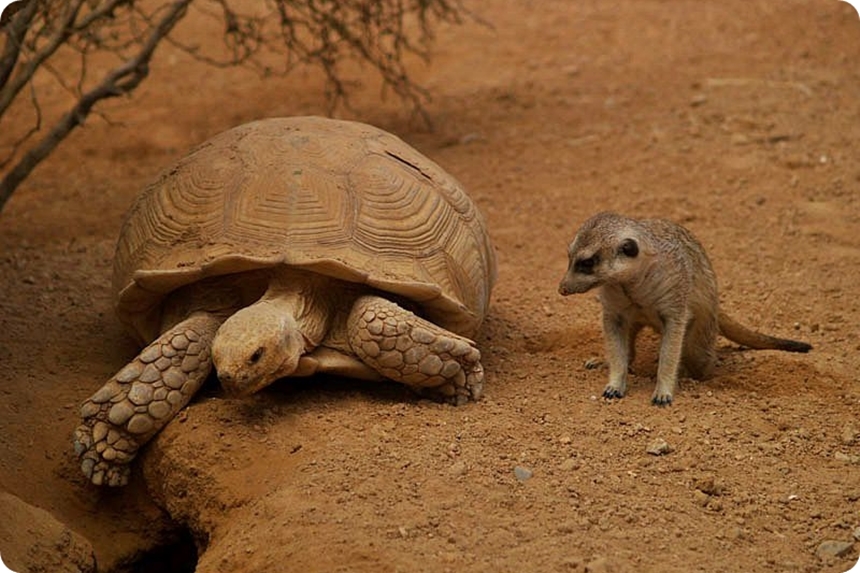
1. Meerkat
The Meerkat is the most popular participant of the mixed-species exhibits with carnivores
Meerkat (Suricata suricatta) and African Spurred Tortoise (Centrochelys sulcata)
Bioparc Valéncia, Spain
Photo © Xavier Bayod Farré
In regard to different families of Carnivores the Mongooses (Herpestidae) had been recorded with the highest – in number 194 – mixed-species exhibits. This is followed by Dogs (Canidae) with 174 mixed exhibits, Weasels and relatives (Mustelidae) with 145, Raccoons (Procyonidae) with 131, Bears (Ursidae) with 108, Earless Seals (Phocidae) with 99, Eared Seals (Otariidae) with 98, Civets and Genets (Viverridae) with 63, Red Panda (Ailuridae) with 48 and Skunks (Mephitidae) with 37.
In regard to species combinations the Asian Small-clawed Otter (Aonyx cinereus) has been socialized with the most – in number 74 – other different species. This is followed by Meerkat (Suricata suricatta) with 46 different taxa, American Black Bear (Ursus americanus) with 40, Binturong (Arctictis binturong) with 33, Striped Skunk (Mephitis mephitis) with 28, Northern Raccoon (Procyon lotor) with 27, South American Coati (Nasua nasua) with 25, California Sea Lion (Zalophus californianus) also with 25, Common Dwarf Mongoose (Helogale parvula) with 24 and Red Panda (Ailurus fulgens) with 23.
In many cases, different carnivore taxa have been successfully associated with each other. According to this study, the most frequent coexistences – in order of frequency, with the number of mixed exhibits recorded in parenthesis – are Brown Bear (Ursus arctos) & Grey Wolf (Canis lupus) (25); California Sea Lion (Zalophus californianus) & Harbor Seal (Phoca vitulina) (24); Binturong (Arctictis binturong) & Asian Small-clawed Otter (Aonyx cinereus) (18); Meerkat (Suricata suricatta) & Yellow Mongoose (Cynictis penicillata) (17); Northern Raccoon (Procyon lotor) & Striped Skunk (Mephitis mephitis) (14); Brown Bear (Ursus arctos) & Red, Corsac and Arctic Fox (Vulpes sp.) (also 14); Harbor Seal (Phoca vitulina) & Grey Seal (Halichoerus grypus) (11) and Andean Bear (Tremarctos ornatus) & South American Coati (Nasua nasua) mixes.
The most common carnivore & non-carnivore combinations – also in order of frequency, with the number of mixed exhibits recorded in parenthesis – are Meerkat (Suricata suricatta) & Cape, Crested and Indian Crested Porcupine (Hystrix sp.) (32); Red Panda (Ailurus fulgens) & Muntjacs (Muntiacus sp.) (23); Asian Small-clawed Otter (Aonyx cinereus) & Gibbons (Hylobates sp., Nomascus sp., Symphalangus sp.) (19) mixed exhibits. Surprisingly, Cheetah (Acinonyx jubatus) & large herbivore (13) mixed exhibits – especially with White Rhinoceros (Ceratotherium simum) (7) – are increasingly common as well. Last but not least worth mentioning the Maned Wolf (Chrysocyon brachyurus) & Giant Anteater (Myrmecophaga tridactyla) (12) combination.
It is interesting to note that mutualism – as a relatively new concept of mixed-species exhibitry and such a way can be interpreted as a „milestone” in this field – can play an important role in the case of mixed exhibits for certain mongoose species, such as the Meerkat (Suricata suricatta) and the Yellow Mongoose (Cynictis penicillata), but especially the Common Dwarf Mongoose (Helogale parvula) and the Banded Mongoose (Mungos mungo).
Differences can be found by regions, e.g. AZA institutions and EAZA zoos also have their own preferred combinations.
Furthermore the study partly focuses on negative experiences in order to improve exhibit management criteria and trying to avoid combinations that have not been proved as successful.
One of the most common and classic examples of the carnivore & carnivore mixed-species exhibits
Brown Bear (Ursus arctos) and Grey Wolf (Canis lupus)
Juraparc, Vallorbe, Switzerland
Photo © Juraparc
Discussion
The most important aspects of a successful mixed-species exhibit are the purposeful use of space and enclosure furnishings, the appropriate feeding techniques, decision-making of which species to breed – with particular attention to AZA Species Survival Plan programs and EAZA Ex situ Programmes – and the right choice of species and individuals.
Generally speaking, one of the most critical factors is the size of the area: the larger the enclosure, the fewer the problems. Expanding the size of the whole captive habitat we can greatly increase the chances that the specimens of the different species are able to get out of each other’s way. Although this quantitative factor is also important, the quality of the given enclosure is much more crucial, since these agents can ensure the stress-free socialization of the combined species. It is extremely important to provide a secure outdoor and indoor space for the subdominant specimens whether belonging to the same species or not. The outdoor exhibit should be well-structured with many kinds of enclosure furnishing elements like small mounds, logs, rock formations and heavily planted areas so that the animals can get out of visual contact with others sharing the same enclosure and provide several escape routes in case of an aggressive contact between the different species. The best option is if the subdominant species have their own areas both outdoors and indoors.
In terms of the daily routine tasks using the appropriate feeding techniques is one of the key factors of success. The experiences show that in several cases the associated species can be easily competitors of each other in reference to nutrition. Therefore it is necessary to feed the smaller species separately or provide as many feeding stations as possible throughout the whole enclosure and keep the competition to a minimum level, because most of the injuries and fatal accidents are the results of food-related aggression. In general, feeding the different species separately is a participating factor to manage the mixed-species exhibit successfully, but on the other hand this makes it difficult to apply certain food-related environmental enrichment methods in comparison with a single-species enclosure.
One of the most important questions is to decide whether we would like to breed the species involved in a multi-species exhibit, or which species we want to breed. The practice of zoos keeping carnivores in a mixed exhibit shows that the presence of these animals means potential danger for the other species when they are dominant in the given coexistence. Providing the abovementioned own areas or total separation can be the solution during the time of rearing the young. Furthermore, the behavioural changes of the adult animals during the breeding season must also be borne in mind which may easily lead to fatal injuries. Therefore it is really important to emphasize the possibility of proper separation. Generally speaking it seems to be true that the proper management of breeding in a mixed-species enclosure is more difficult – or sometimes impossible – than in a single-species exhibit. As a result, there is no aim to breed (all) the animals in this type of exhibitry in many cases, so sterilisation and single-sex grouping are also applied techniques in managing. If any of the species has an important breeding programme like the abovementioned SSP or EEP, worth it to look over and analyze all the mentioned disadvantages before putting the given animals into a mixed enclosure.
According to the criteria of species selection, most of the known examples show that zoos exhibit animals together from the same geographic region for educational purposes. In the case of combining species that occupy similar ecological niches in nature the level of competition can be very high, therefore a large difference in body size between the combined species may be part of the solution. Choosing animals with different lifestyles – for example terrestrial-arboreal or diurnal-nocturnal – might be a good option as well. Although considering the theoretical approaches of the appropriate selection of species are also very important, we have to take into account that the success of the combination depends mostly on the individual level, simply because of the diverse individual characteristics of the animals in terms of behaviour. Correct introduction of the different species is a very sensitive issue which depends principally on the method of socialization and age of the animals. Introducing the smaller and subdominant species to the exhibit can be efficient due to exploring the whole area. During socialization the principle of gradience should be followed, so visual and olfactory stimuli have to be the first before the possibility of physical contact of the animals. In general younger animals can be combined easier, but the experiences have shown us that many adult carnivore specimens have successfully been mixed with several other taxa.
In summary we can say that thanks to proper management, a significant number of the listed mixed-species exhibits with carnivores have been proven successful which is confirmed by their growing number as well. Nevertheless, the experiences reflect that these coexistences can easily be problematic in many cases which is strengthened by numerous lethal attacks and fatalities caused by carnivores. All of these facts show that we have to handle this exhibit type very cautiously with special emphasis on preliminary studies and use of risk analysis methods.
Considering the positive feedback, publication of more mixed-species articles with other mammalian taxa have already been completed or will be realized in the future. Documents dealing with Pigs (Suidae) and Peccaries (Tayassuidae) have been published in 2021 while studies with Hippopotamuses (Hippopotamidae) and Elephants (Elephantidae) – amongst others – will be finalized in 2022.
To learn more about these documents please visit the previously mentioned Zoorope and ZooLex websites.
Acknowledgements
I would like to thank all the persons very much who helped to improve the series of documents with providing information and photographs as well, their names are listed in the sections of the previously published documents dealing with the given taxonomic groups.
First of all I would like to thank Rebecca GREENBERG Director of Animal Programs (Association of Zoos & Aquariums – AZA, Silver Spring, Maryland, United States of America) and Karen BAUMAN Manager of Reproductive Sciences (Saint Louis Zoo, St. Louis, Missouri, United States of America) for the opportunity to publish the short summary of the mixed-species exhibit article series.
Furthermore, I also would like to thank the following institutions and ladies and gentlemen for making photographs available for the summary above: Attica Zoological Park (Athens, Greece), Espace Zoologique de Saint-Martin la Plaine (Saint-Martin-la-Plaine, France), GaiaZOO (Kerkrade, the Netherlands), Georgia Aquarium (Atlanta, Georgia, United States of America), Juraparc (Vallorbe, Switzerland), Zoo Basel (Basel, Switzerland), Zoo Braunschweig ’Arche Noah’ (Braunschweig, Germany), as well as Dr. Katrin BAUMGARTNER, BOROS Tamás, Jörg EVERDING, Xavier Bayod FARRÉ, Allan GALWAY, Christopher HOLLAND, Dr. Helmut MÄGDEFRAU, NAGY Antal, Dr. Marc ROSSET, Monty SLOAN, Petra URBANEK, Jim WILSON
Comments

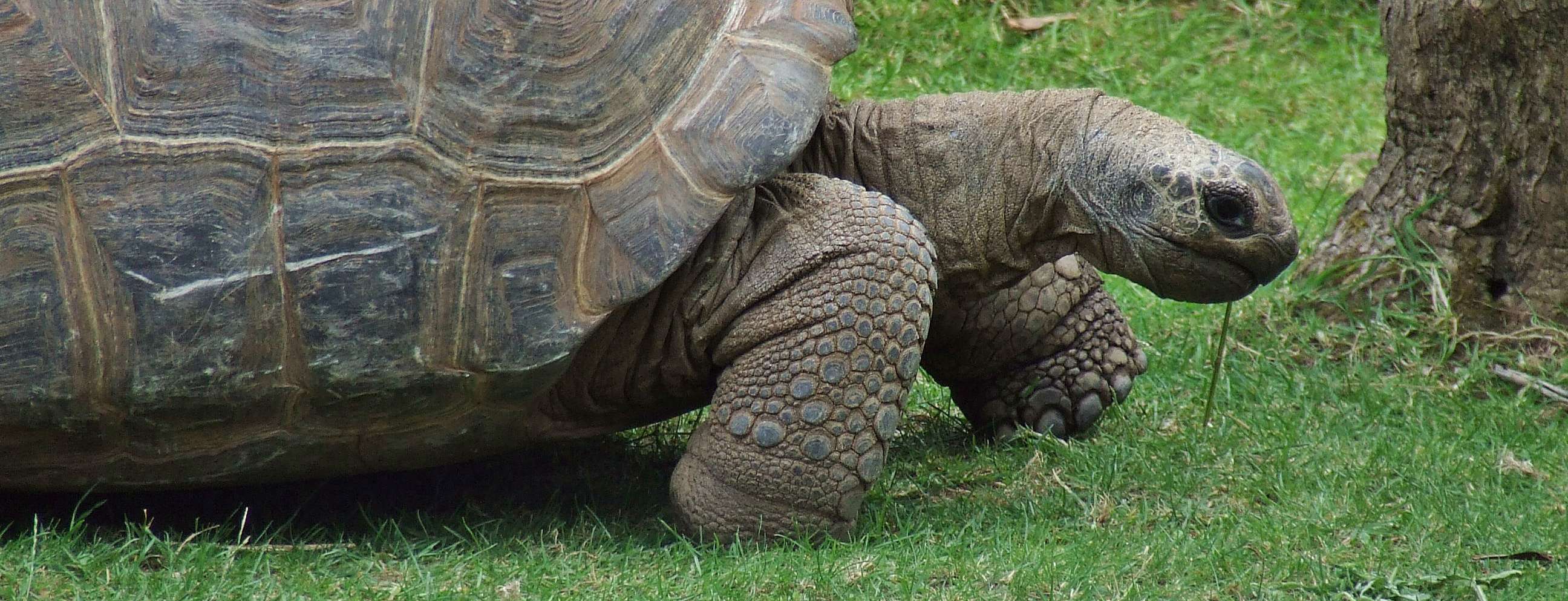
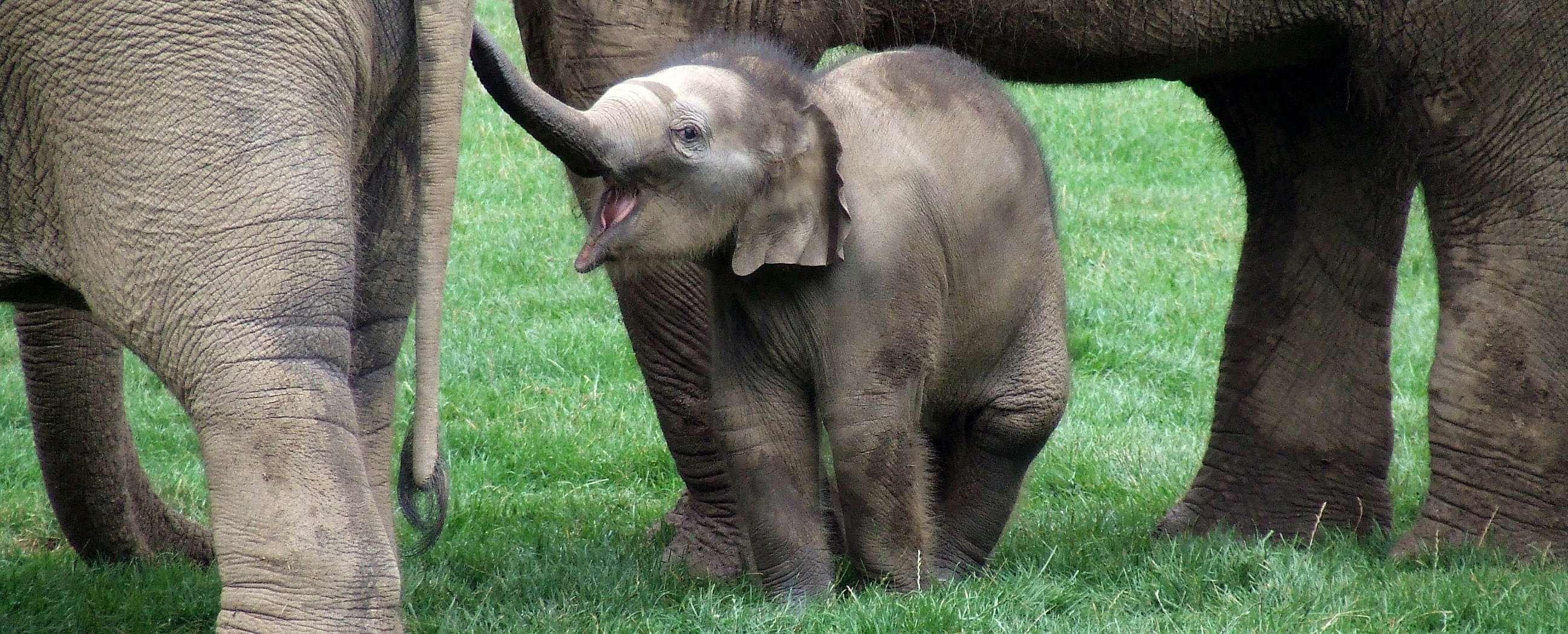







.jpg)
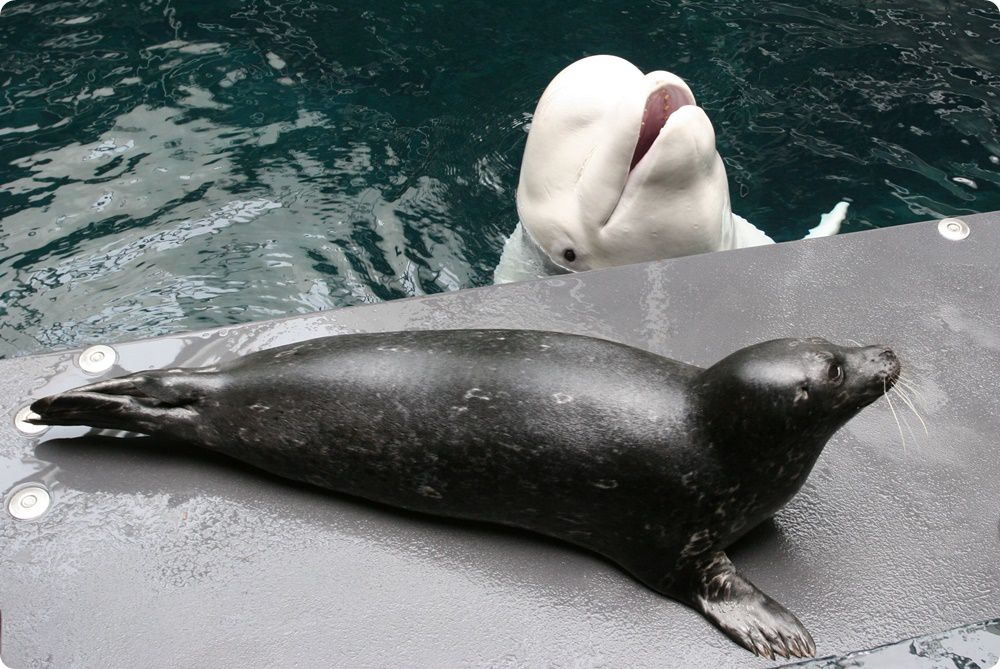
.jpg)

.jpg)
.jpg)
.jpg)

.jpg)
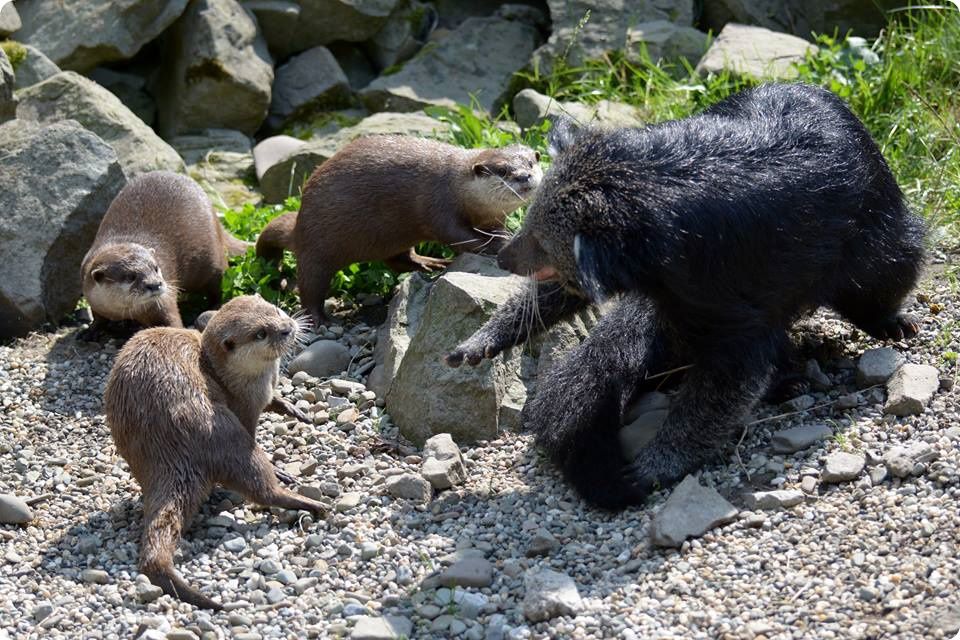
.jpg)
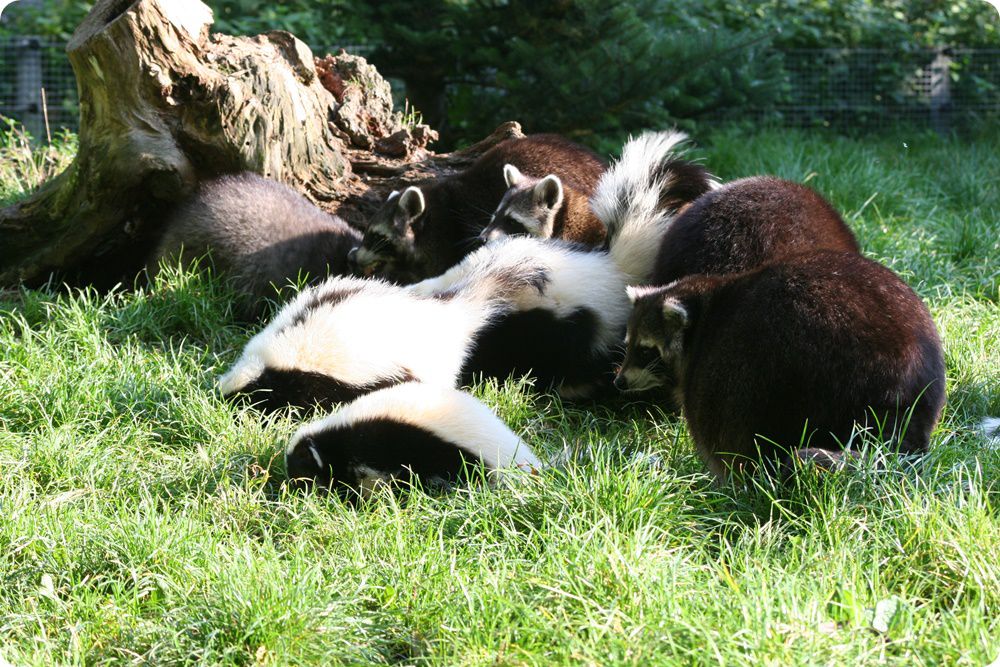
.jpg)
